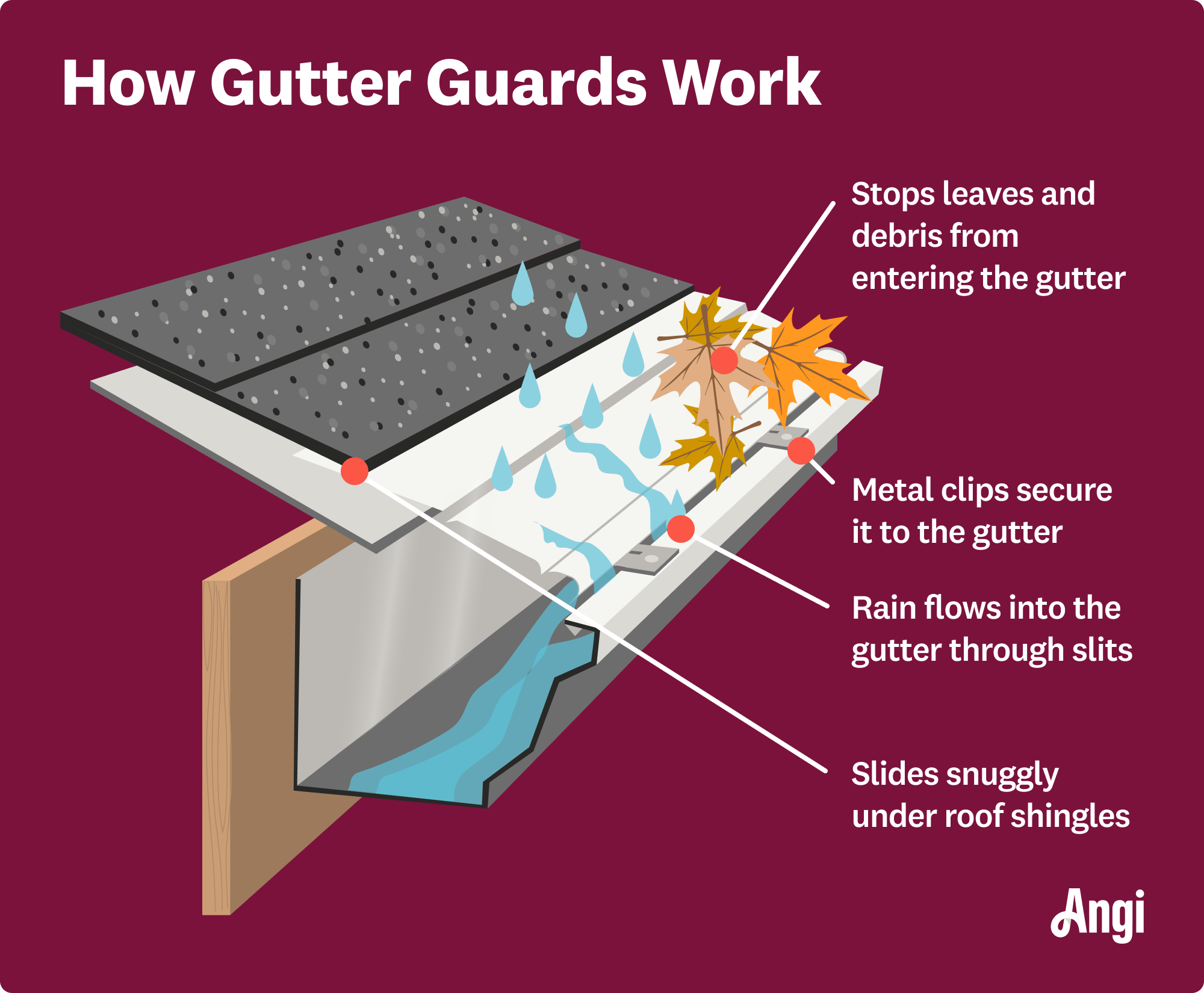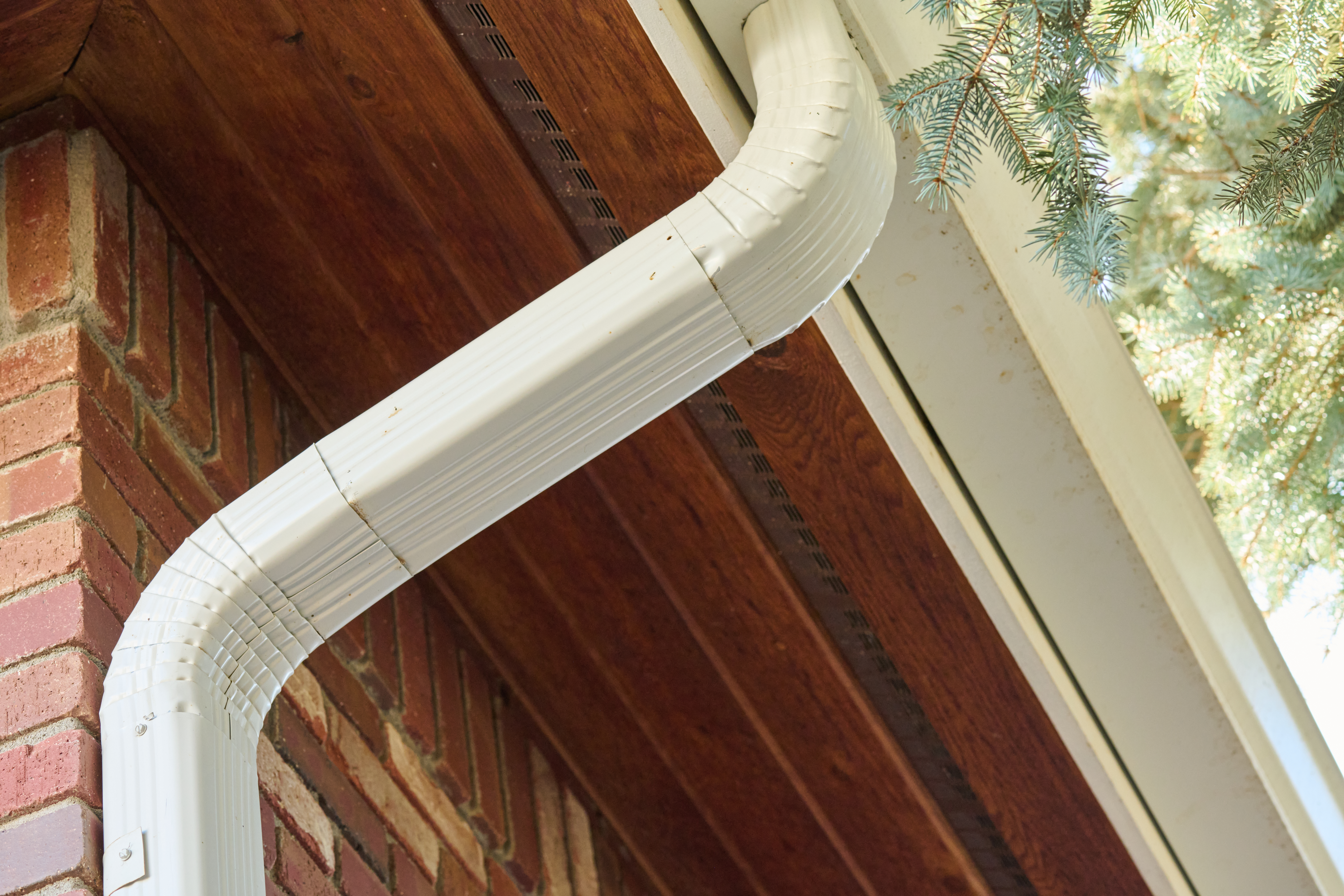
This guide to gutter cleaning costs in Columbus, OH provides local estimates for cleaning gutters based on length, type, and number of stories on a home.
When it comes to cleaning your gutters, guards and screens won't let you completely off the hook


The joys of homeownership may include a big backyard, cozy fireplace, or a mailbox with your name on it. But scooping out dirty gutters doesn't often fall on this list. Despite the inconvenience to your weekend schedule, gutter cleaning is a seasonal maintenance task that is satisfying to complete and will keep your home looking great for decades to come.
Fortunately, gutter guards and screens make maintaining your gutters much easier—requiring less frequent cleanings. Follow this guide for how to clean gutters with gutter guards safely.
Hiring a pro to clean your gutters can help you discover if they have any unnoticed damage. Damaged gutters can cost thousands down the road if not addressed ASAP.


Using a screwdriver or cordless drill, remove your gutter guards per the manufacturer’s instructions. Take care in this process, as your guards may break or crack when being dislodged from the guttering.

Once the guards are removed, it’s time for cleaning to commence. The first step is to clear out any loose debris from the gutter. You can probably do this part with gloved hands and a scoop. Smaller chunks and clumps can be emptied into a sturdy bucket to avoid a messy clean-up.
Larger chunks of debris can be dropped onto a piece of tarp or plastic sheeting placed on the ground beneath you. Your assistant should periodically empty your debris bucket to ensure it doesn’t become so heavy that it interferes with your balance while working on the ladder or roof.

Once you’ve collected the loose debris, it’s time to get to work on clogs and other build-up that may be more difficult to dislodge. In this case, you might try a scraper or spatula to help you clear those stubborn materials.
If you need a bit of extra firepower to clear those gutters, then you have a number of options, including a garden hose, wet-dry vacuum, leaf blower with specialty nozzles for clearing lawn debris, or a power washer.
Ideally, power washers should only be used when you are cleaning the gutters from the ground rather than from a ladder. Extension handles can usually be purchased for these tools to allow you to clean first-story gutters from the ground.
When you can’t clean from the ground, working by hand with a shovel, bucket, and scraper is much safer.

Once you’ve finished cleaning, thoroughly spray your gutters and downspouts with a garden hose. This will not only help clear any remaining debris but will also help you find any clumps or clogs you might have missed.

Now that your gutters and downspouts are all clean and rinsed, you should thoroughly inspect your gutter guards. Check for visible cracks, bends, or gaps in the material that could allow debris to enter. Look for signs of sagging or detachment from the gutter, which may indicate wear or improper installation.
Common causes of gutter guard damage include: falling tree branches which can crack or dent the guards; heavy ice or snow buildup which can warp or pull them away from the gutter; and clogging from fine debris, which may lead to overflow and strain.
Replace any segments that show signs of cracking, splitting, warping, or breakage. Regular inspections, especially after storms, can help prevent long-term issues.
Don't wait until your gutter guards are looking sloppy before scheduling a cleaning. While gutter guards are there to keep your gutters clear, both gutters and gutter guards should be thoroughly cleaned about twice a year—ideally in fall and spring. If your property is surrounded by trees, your gutter guards may need to be cleaned more frequently.
Always be sure to get your first cold-weather cleaning in before the first snowfall (although it’s good practice to inspect them after heavy rain or snow) if you live in a colder climate. Attempting to clean your gutter guards when conditions are cold, frozen, or snowy is both difficult and dangerous.
Local gutter cleaners can schedule routine cleaning and maintenance of your gutter guards. Pros can also point out any weak points that need to be fixed before serious issues arise.
Some gutter systems may require a seasoned pro to handle the cleaning and guard reinstallation. It’s an especially good idea to call in a professional gutter cleaning service near you if:
Your gutters are installed two stories or higher above the ground.
Your gutter guards or guttering are in poor condition, including significant breaks, leaks, and gaps.
You have a complex guttering system with difficult-to-reach areas, steep slopes, or high peaks.
The cost to clean your gutters can vary widely, depending on the size of your home, the condition of the gutters, and the amount of time between cleanings. On average, gutter-cleaning costs range from $120 to $230. Since your gutters have guards, you will have less debris in your gutters and downspouts, which can reduce the cost of professional cleaning. However, the time needed to remove and then replace the screens may offset those potential savings.
The primary reasons homeowners hire professionals for gutter cleaning include routine maintenance, clogs, and water that overflows or doesn’t drain. A gutter cleaning pro can help keep your gutters in good shape, protecting your roof and home from water damage and pests.
From average costs to expert advice, get all the answers you need to get your job done.

This guide to gutter cleaning costs in Columbus, OH provides local estimates for cleaning gutters based on length, type, and number of stories on a home.

This guide to gutter cleaning costs provides estimates for cleaning different types of gutters, tips for saving money on gutter cleaning, and answers to how to clean gutters.

Wondering how to clean gutters without a ladder? Our guide will show you six methods you can use to keep your gutters clear from the ground.

Learn about the downspout cleaning tools to buy to prevent gutter clogs that can cause water to pool near your basement or foundation.

Should you tip your gutter cleaners? Learn some simple guidelines around tipping to show your appreciation to your gutter professional.

If you’re wondering when the best time to clean gutters is, the answer depends on your climate and the number and type of trees around you. Our guide breaks it all down.